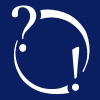
Scope
Writing about science for the public is challenging. With deadlines looming, it's hard to carve out time to recharge your intellectual batteries, find distinctive stories, and get a broad overview of where researchers are headed. We've designed this workshop to give you the background material you need to cover astrophysics and cosmology, packing as much as possible into as short a time as possible for the busy working journalist.
Researchers will offer lectures on currently relevant topics with extensive question-and-answer sessions -- like a seminar class, minus homework and grades. They'll focus on topics that are either relevant for presently running experiments or are likely to increase in relevance in the soon future when experiments will deliver data. We hope that this meeting will be conductive to improve the flow of information about recent research in astrophysics and cosmology. We also hope, of course, that it will be fun.
Topics that will be covered are:
- Dark Matter: What is this invisible stuff that fills the universe? We'll cover the evidence, theory, and experiments. Dark Energy: Why is the expansion of the universe accelerating and why does that trouble physicists so profoundly? We'll get into both theory and observation.
- The Cosmic Microwave Background: How might the afterglow of the big bang reveal the deep structure of space and time? We'll cover novel effects such as tensor modes and non-Gaussianity and their relevance for testing quantum gravitational effects and the inflation scenarios in the early universe.
- Gravitational waves: What's coming up with observations of ripples in the fabric of spacetime? We'll discuss theory, experiments, and implications.
- Gamma Ray Bursts and Supernovae: How do the biggest explosions in the universe boggle the brain? We'll learn about observations, simulations, and the meaning of it all.
- Solar Physics: How does our own star tick and why does it still perplex astrophysicists? We'll discuss theory, simulation, observation, and the relevance of understanding the physics of our sun and that of other stars.
Venue
The workshop takes place at Nordita, the Nordic Institute for Theoretical Physics, in Stockholm, Sweden. It is located at the AlbaNova University Center. More information about Nordita can be found on the Nordita website or in the information brochure (PDF).
Lecturers
Lecturers
|
Accommodation
Invited participants and lecturers will be booked in the BIZ apartments. For questions about the accomodation, please refer to the information on the Nordita website
Travel
The closest international airport to the conference venue is Arlanda (ARN), about 35 km North of the Stockholm City Center.
To get from Arlanda to Stockholm, you can either take the train, the bus, or a taxi. The train is called Arlanda Express, leaves every 15 minutes and arrives at the Central Station (T-Centralen) within 20 minutes. The price is SEK 240 one way, or 460 round trip. The busses are called Flygbussarna, leave every 10 minutes, and arrive at T-Centralen within 40 minutes. The price is approx SEK 120 one-way, you can save SEK 20 by buying the ticket in advance online. The busses also stop at other places before T-Centralen. The price for a taxi to the city center is about SEK 500.
Directions to the institute with maps can be found at this website. The closest subway station is Tekniska Högskolan on the red line direction Mörby Centrum. You find a subway map here.
Getting Around
Stockholm has a very well functioning public transportation system with subways and busses. You can get tickets at every subway station in stores called Pressbyrån.
Currency and Language
The Swedish currency is SEK (Sweden Krona), *not* the Euro. In most places you can pay with major credit cards or debit cards in the Maestro system. If you want to change foreign money, it is recommendable to do this already at arrival either at the airport or at T-Centralen.
Almost everybody in the Swedish capital speaks English.

